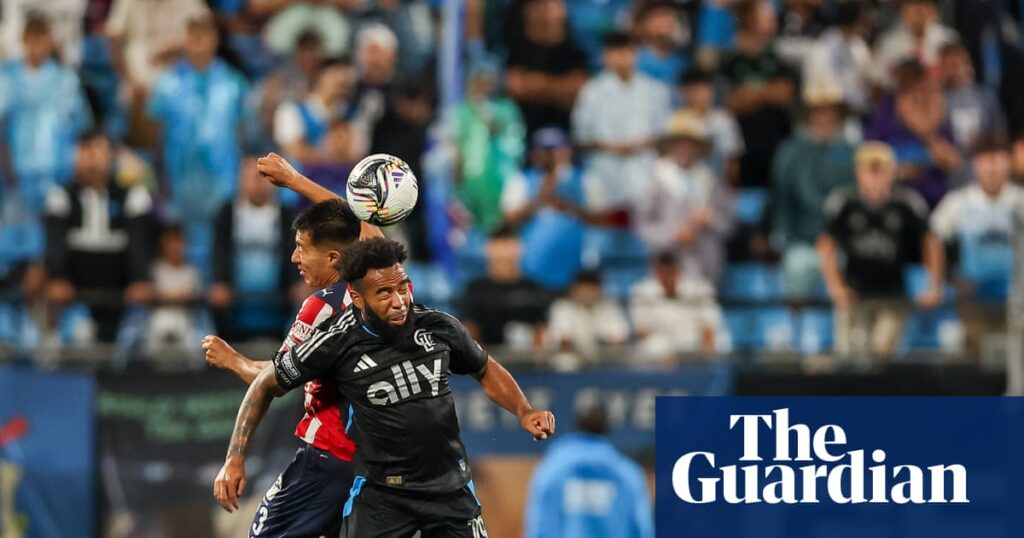It feels like a fever dream, at this point.
In the summer of 2023, Lionel Messi positioned himself over a free kick wearing the pink-and-white colors of Major League Soccer’s Inter Miami. Messi’s move to the United States had been long-rumored but often dismissed as wild speculation. The league was still a backwater compared to many in Europe and its clubs simply didn’t have the financial muscle of others vying for the Argentine’s services.
Yet MLS had moved heaven and earth to land Messi, and here he was, playing in front of celebrities, fans and millions of viewers at home and abroad. Deep into the second half of Miami’s match against Liga MX side Cruz Azul, Messi used one stroke of his left foot to transport everybody in attendance back to his glory days at Barcelona.
His free kick propelled Inter Miami to victory that day, and his brilliance over the ensuing month propelled them to an eventual Leagues Cup title.
To this day, Messi’s free kick remains an iconic goal in league history, and among MLS’ most widely-consumed ones (it’s currently the fourth most-viewed goal on MLS’ YouTube profile, behind Zlatan Ibrahimović’s debut goal for the Galaxy, Wayne Rooney’s tackle and assist, and David Beckham’s Olimpico). At the time, it certainly felt like a watershed moment for the league, and a pivotal moment for Leagues Cup.
Many who watched Messi’s masterstroke had never heard of Leagues Cup, MLS and Liga MX’s now-annual mid-season tournament. The joint venture was the latest in a long line of attempts by both leagues to capitalize on the long-simmering rivalry between Mexican and American clubs, and to capitalize on the massive market of Hispanic consumers in the United States.
Now entering its third year, it feels fair to wonder who is actually asking for this thing.
Its fundamental flaws became apparent last year, when an injured Messi was unable to participate and his presence could no longer mask them. The tournament takes place entirely in the United States, which leads to rightful questions about competitive balance and sometimes-empty stadiums. The value of the US-Mexico rivalry has also felt on the decline, appearing strongly only in matchups between the continent’s biggest clubs and, naturally, its national teams.
after newsletter promotion
MLS and Liga MX have fixed a few of the tournament’s other critical issues, successfully tweaking the tournament’s format to require early matchups between MLS and LigaMX teams, only admitting competitive sides from each league, and eliminating draws entirely. There is real prize money at stake (thought to be around $2m for the winner), and a handful of berths to Concacaf Champions Cup, the region’s continental club championship and the entry point into the Fifa Club World Cup.
MLS also no longer fully pauses its league schedule for the run of the tournament, giving eliminated teams a chance to soldier on in regular season play and offering fans who couldn’t care less about the tournament an opportunity to stay engaged with their clubs.
But as the tournament evolves, the landscape around it has too. America has long been viewed as global football’s ATM, a massive country with a soccer-starved populous and unmatched spending power. For over a decade, clubs and sometimes entire competitions have migrated stateside in search of to raise capital and brand awareness. That exercise reached new heights of absurdity this summer with the arrival of the Club World Cup. The tournament was a mixed bag – unquestionably exciting at times but also widely viewed as a purely commercial exercise. By the time Chelsea (and US President Donald Trump) hoisted the trophy, many viewers had already moved on.
Three MLS clubs participated in the tournament, pausing an already-congested league schedule to measure themselves against legitimate international competition. It’s largely the same value that Major League Soccer argues they have created with Leagues Cup – that the tournament gives its clubs a chance to measure themselves against Mexican clubs that have long been viewed as the best in the region.
Beyond all of this, there’s also the problem that MLS always faces, maybe unfairly: almost any new endeavor it attempts will be met with open disdain from consumers of the sport at home and abroad, labeled synthetic or tossed aside as a cash-grab. That criticism is impossible to avoid when you’re constantly reinventing yourself and constantly adjusting your product in search of profitability and relevance. Leagues Cup, created out of thin air, certainly fits that bill.
It’s a point driven home perfectly by the dwindling relevance of the US Open Cup, which at this point is among the only truly authentic products in American soccer. As MLS has pumped resources into raising the profile of its own nascent tournament, the Open Cup has continued to fade further into the recesses of the public consciousness, even as it has the potential to reach more locales in the US than any other pro-level competition.
It would be unfair to label Leagues Cup a failure before it finishes its third edition. A better time to accurately judge its success may be towards the end of this decade, after the tournament has had an opportunity to mature a bit and after the upcoming men’s and women’s World Cups have come and gone. MLS and Liga MX will surely continue to tinker with it in the meantime, aiming to make it something consumers in the US actually care about.
It’s what MLS does best, after all. 30 years in, the league itself remains a work in progress, tinkering with its own formula in an attempt to finally thrust itself firmly into the collective consciousness. In some ways, it’s succeeded. It remains to be seen whether it can do the same for Leagues Cup.

